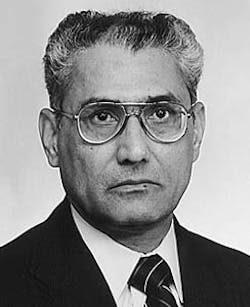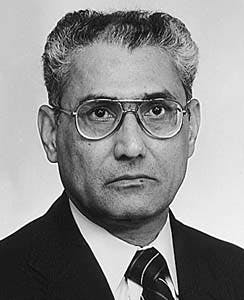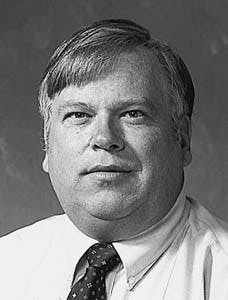Polymer particulates control fluid loss during well completions
Syed A. AliIn its Gulf of Mexico operations, Chevron U.S.A. Production Co. has effectively controlled completion fluid loss to the formation by including nondamaging, soluble particulates (NSP) in the fluid.
Chevron U.S.A. Production Co.
New OrleansPhilip D. Nguyen, Jimmie D. Weaver
Halliburton Energy Services Inc.
Duncan, Okla.
In seven Chevron wells recently completed in the Gulf of Mexico, fluid loss dropped to very low levels or zero with NSP included in the completion fluid.
Conventional particulate-based, fluid-loss control methods have shown varying degrees of fluid-loss control. But these methods have the potential to cause near well bore damage and long cleanup periods.
In contrast, the NSP fluid-loss additive can be cleaned up readily and causes very little decrease in formation permeability.
NSP is stable enough to store and is provided as a slurry concentrate that can be dispersed easily in completion fluid. It can be pumped and mixed in the field with conventional equipment.
NSP forms a barrier or filter cake that covers the surface of the formation or perforation where fluid loss is occurring.
Fluid loss
Completion fluids are critical because the fluids provide the hydrostatic pressure to hold formation fluids under control during well completions. If the completion fluid leaks off to the formation, the hydrostatic pressure will decrease and the well can blow out.
Completion fluids can cost up to $500/bbl; therefore, keeping the fluid inside the well bore significantly saves costs.
Fluid loss occurs as the particulate-free fluid leaks off into a high-permeability zone or natural-fracture streaks. In some cases, fluid penetrating into the formation matrices is difficult to remove and can damage the formation.
Fluid-loss control is important in fracturing, frac-packing, and gravel packing. High fluid loss causes premature screenout, which reduces the success of well treatments. Minimizing fluid loss helps reduce the invasion into the formation matrix, so the operation causes less damage to the production zone.
Conventional control
Conventional particulate fluid-loss control materials such as oil-soluble resins, carbonate, and graded salt fluid-loss additives have been used with varying degrees of success. These materials can cause severe formation damage in some cases.
These pills inhibit fluid flow by producing solvent-specific solids that generate filter-cake buildup. Such buildup can damage the near-well bore areas and reduce production if the permeability of the formation is not restored to its original level.
The inherent problem in conventional fluid-loss control materials is the need for long cleanup periods. Removal of these fluid-loss control materials is generally difficult and incomplete because of poor solubility and inadequate dynamic fluid contact.
When fluid circulation and dynamic fluid contact are not available to help dissolve the concentrated buildup of material, the dissolution rate can be very slow.
Another problem presented by conventional linear viscoelastic or heavy metal-crosslinked polymer pills is the need for large-diameter tubing because of high friction pressures. The expense of using a rig to handle large-diameter tubing is compounded by the necessity of preparing the fluid-loss control additive at the well site.
NSP application
In seven of Chevron's recently completed wells, NSP proved effective in controlling fluid loss. Table 1 [38550 bytes] shows the fluid-loss data from these wells.
These seven wells displayed a wide range of temperatures and reservoir conditions. Each had a substantial pre-pill, fluid-loss rate ranging from 6 to 150 bbl/hr, with overbalance pressure ranging from 700 to 1,500 psi. The formation permeability ranged from 10 to 1,000 md, and pill volumes ranged from 3 to 10 bbl.
After NSP, each well's fluid loss dropped to very low values or to zero.
NSP works by sealing the flow surface of permeable formations with a filter cake to prevent further fluid penetration after the spurt.
Fig. 1 [28434 bytes] shows how NSP seals perforations. In Fig. 1, the three perforations vary widely in permeability. NSP temporarily seals each perforation effectively.
Loss of some fluid is necessary to enable temporary sealing of the perforation. As the fluid moves NSP into the perforation, the fluid passes through the permeable matrix, and the particulates stay in the perforation to work individually or in mass to form a barrier limiting or eliminating further fluid loss.
Restoring permeability
Another important factor in determining a fluid-loss control additive's effectiveness is its capability for cleanup, allowing the well's permeability to be restored.
NSP can be completely removed to reestablish the treated formation permeability to its original state. An acid reaction that breaks the crosslink of the gel dissolves the grated-gel material. The gel becomes a clean, linear hydroxyethylcellulose (HEC), allowing the NSP to be removed completely from the perforations and formation surface.
Because of the nature of the gel, the physical size of the proton (H+), and the chemical potential difference between the acid and the gel, this uncrosslinking reaction occurs quickly and thoroughly through a diffusion mechanism, even under static conditions with no physical intermixing.
Tests have indicated that the regained permeability of the cores treated with NSP was 90% or even greater after the cleanup. Fig. 2 [22545 bytes] illustrates the leakoff-control behavior of NSP during the static fluid loss and regained-permeability flow tests.
Table 2 [30166 bytes] provides data from the regained-permeability tests.
NSP testing
Static and dynamic fluid-loss tests revealed NSP's effectiveness in controlling fluid loss. The flow tests measured the effectiveness of NSP variations, including varying particle sizes and distribution, NSP concentration, NSP strength, system temperature and injection pressure, core permeability and pore size distribution, and carrier fluid type.
Spurt-loss volume (the amount of initial fluid loss) and Cw, fluid-loss coefficient, were determining factors in measuring NSP's effectiveness in fluid-loss control.
Shear rate
NSP particulate provides effective fluid-loss control, even during high-shear conditions. Because of the diverse potential applications for which NSP particulate can be used, the material was subjected to shear rates ranging from near 0 to 210,000 sec-1 before the static and dynamic fluid-loss tests.
After the slurry experienced shearing at high rates ( 65,000 sec-1), its consistency became paste-like, composed of microsized NSP. The higher the shear rate, the thicker the slurry became, despite the fact that the slurry in each shear rate had the same original concentration of NSP particulate.
Fig. 3 [22126 bytes] illustrates that NSP particulate provides effective fluid-loss control, regardless of preconditioning shear rate, even in high-permeability core materials.
This precondition shear simulates situations of high-rate pumping in small-diameter tubing, including shear rates observed at a drill bit circulation rate of 5 bbl/min/nozzle.
Particle size
Although both large or small NSP particulates can provide fluid-loss control, the spurt volume for small particulates is lower than the spurt volume for large particulates.
Large NSP particles are believed to leave larger pores between particles, which means the additive provides less resistance to the invading fluid. Small NSP particles appeared to form much smaller pores between particles, and therefore cause higher flow resistance. Higher flow resistance means greater fluid-loss control.
A slurry with a wide range of particulate size distribution may provide more effective fluid-loss control. In a slurry with particulate ranging from small to large, the small particulates fill the pore space between the large particulates.
The varying sizes form a filter cake that serves as a barrier to prevent fluid loss after the spurt.
Particulate concentration
NSP must cover the flow surface of the formation core before the particulate can form an effective filter cake to control fluid loss.
The rate at which NSP covers the surface determines the rate, cumulative amount, and duration of fluid loss. Once NSP forms a barrier, the fluid-loss rate should decrease or become negligible with time. However, beyond a certain particulate concentration, NSP's effectiveness becomes unchanged.
Therefore, it is possible to select an optimal concentration to ensure that the treatment is both effective and economical.
The optimal particulate concentration sometimes depends on well conditions, such as bottom hole pressure, but more often depends on other factors, including particulate size, permeability, pore size distribution at the formation face, and the tendency of the particulate to deform.
Table 3 [65107 bytes] shows the effect of NSP concentration on fluid-loss control at a given differential pressure.
Temperature, pressure
The system temperature and the injection pressure affect the effectiveness of NSP's fluid-loss control. Increased temperature causes the NSP particulate to deform, spread out, or penetrate the pore surface (Table 4 [39178 bytes]). Soft particulate, especially smaller sizes, can also penetrate the pores near the surface, especially with high injection pressure and high-permeability core materials.
After the most appropriate variation of NSP is determined for a given operation, operators must consider system temperature and injection pressure.
Table 5 [31492 bytes] shows the effect of injection pressure on NSP fluid-loss control at 75° F.
Applications
NSP is applicable to fluid-loss control after perforating, gravel-packing, or frac-packing operations. NSP can also be used during and after horizontal hole cleanup of drilling-fluid filter cake or in zonal isolation with other well-treatment procedures.
More applications of NSP, including underreaming and drilling, are under development.
The Authors
Syed A. Ali is technical advisor for Chevron U.S.A. Production Co., New Orleans, specializing in sandstone acidizing, formation damage control, rock-fluid interaction, mineraology, and oil field chemistry. He has an MS from Ohio State University and a PhD from Rensselaer Polytechnic Institute.
Philip D. Nguyen is a senior engineer III in the production enhancement products and processes group at Halliburton's technology center in Duncan, Okla. Since joining Halliburton, he has worked in various areas of sand control, conformance, completion, and stimulation research. Nguyen holds a PhD in chemical engineering from the University of Oklahoma.
Jimmie D. Weaver is a principal scientist III in the production enhancement products and processes group at Halliburton's technology center in Duncan, Okla. His principal area of expertise is in polymer science, especially as applied to clay treatment, fluid rheology modification, enhanced oil recovery, and plastics. Weaver holds a BS in chemistry from Southwestern Oklahoma State University, and a PhD in organic chemistry from Oklahoma State University.
Copyright 1997 Oil & Gas Journal. All Rights Reserved.



